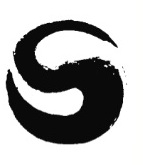Raising the Head (as if suspended from above?)
One of my German teachers recently asked me about the Yang Family principle of “raising the head as if suspended from above.” He was trying to understand this principle by working from above his head. This, I told him, was the wrong idea.
I have often criticized the common transliteration of the Chinese characters that represent the Yang Family ten (or thirteen) rules for practicing tai chi. Raising the head as if suspended from above is misleading. Every tai chi posture is built from the roots of the feet up to the top of the head. Only when the lumbar vertebrae are loosened, and the thoracic vertebrae are raised, can the cervical vertebrae straighten, completing the internal muscular connection from the feet through the spine to the occipital point of the head. Furthermore, proper raising of the head cannot be accomplished without the correct setting of the shoulders.
Many tiger style Yang practitioners slump their shoulders forward and spread apart their scapulae in an attempt to “set the shoulders and hollow the chest to raise the back.” This is a very bad idea that will ultimately lead to problems with the shoulder joints and the cervical vertebrae. The shoulders must be set straight back atop the thoracic cavity. When this is done properly, the neck and head raise up naturally and correctly, the clavicle bones will be horizontal, the sternum will be positioned correctly in the chest and the scapulae will sit naturally flat against the back ribs.
Many of my senior tai chi teachers have complained that this shoulder position is very restrictive and tense. I tell them that the reason for this is that their upper back muscles, including the erector spinae, the latissimus dorsi, the trapezius, and the deltoid muscles, are too stiff. They must stretch these muscles and make them supple. This can be done through moving chi kung exercises. Master Ip developed many such exercises, undoubtedly realizing that many tai chi practitioners have tight backs that trap the free flow of the spine. When the back muscles become supple, the thoracic vertebrae can flex convexly, thus raising the back and naturally drawing in the chest. This will elevate the cervical vertebrae and lift up the head from below, not from above.


 Bob Boyd
Bob Boyd
Reader Comments